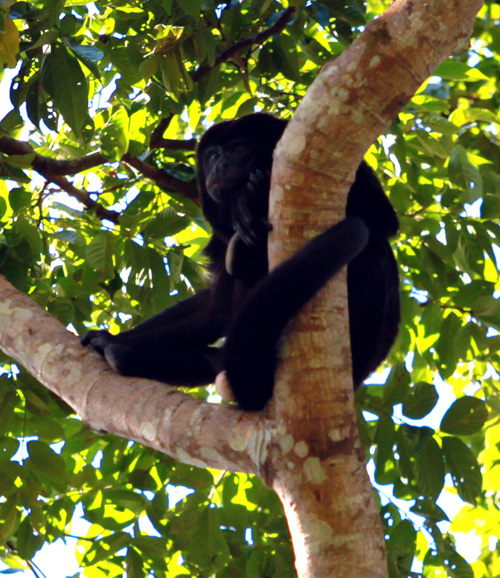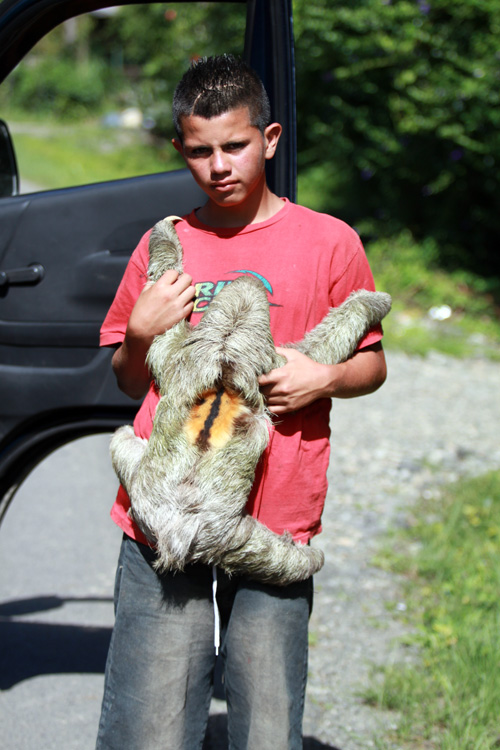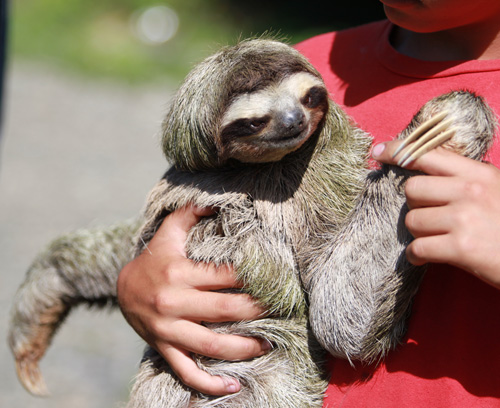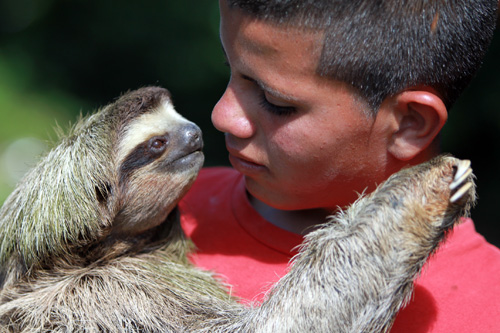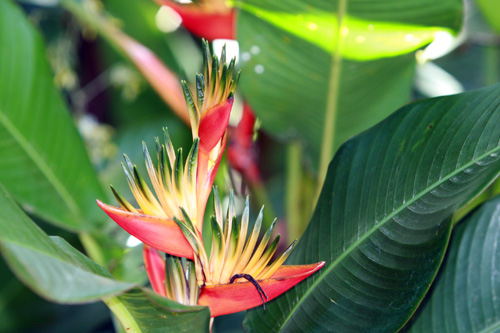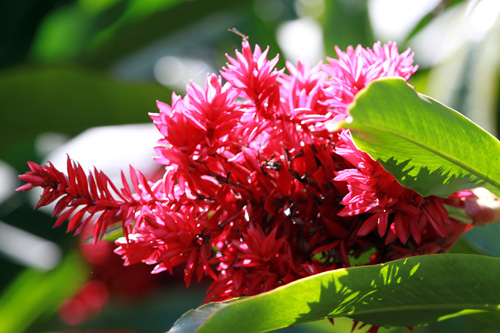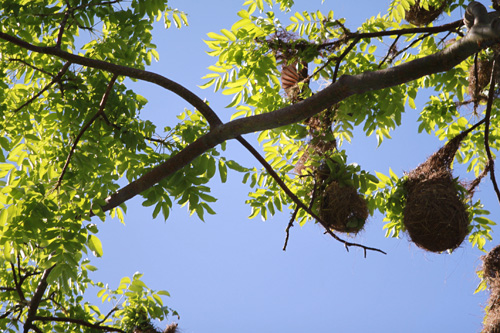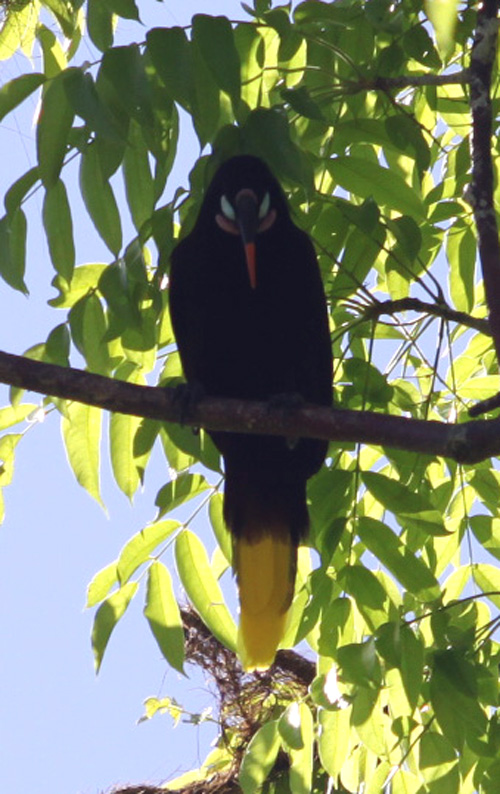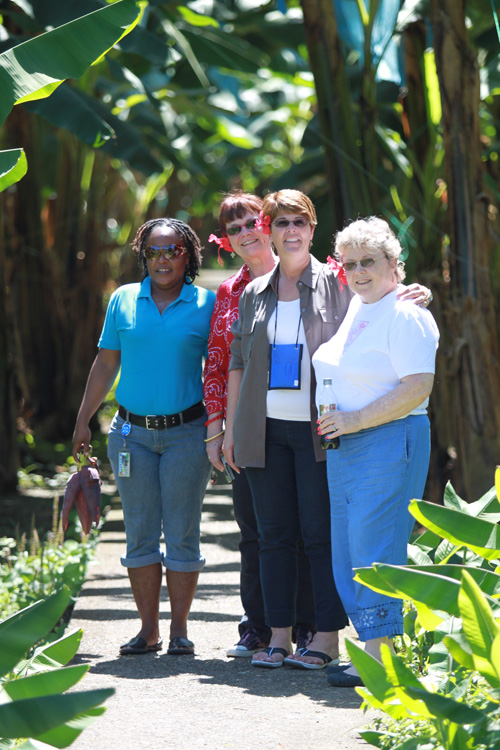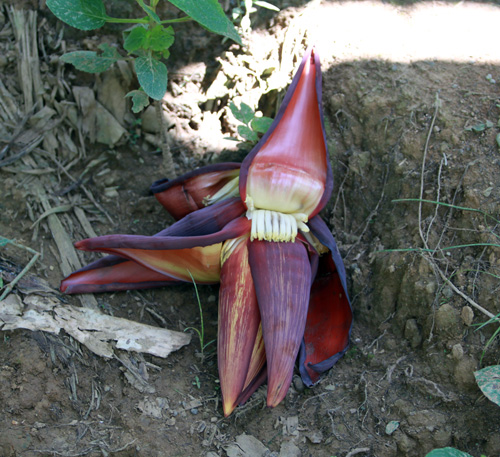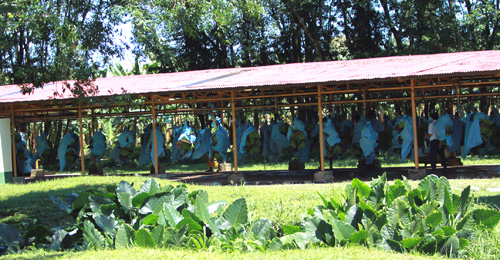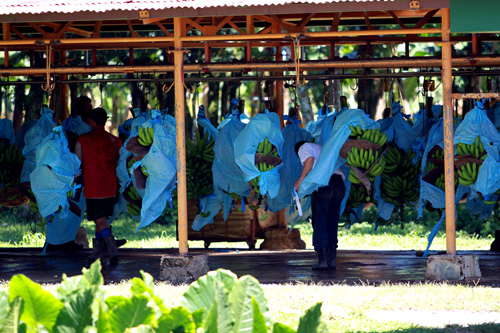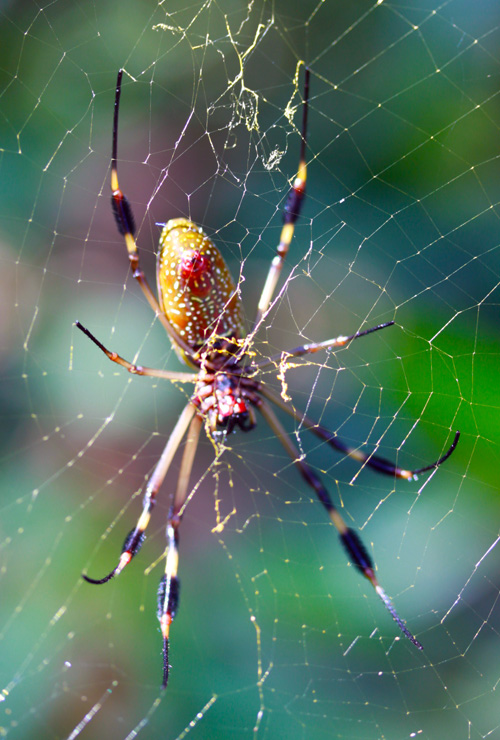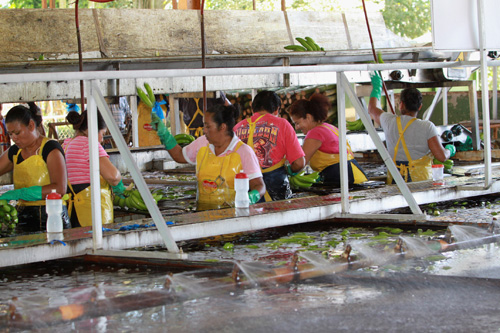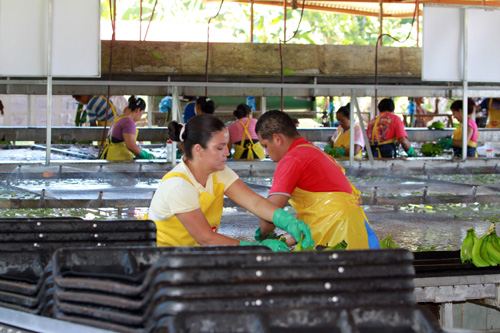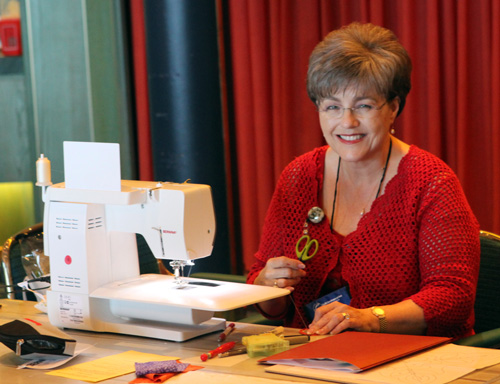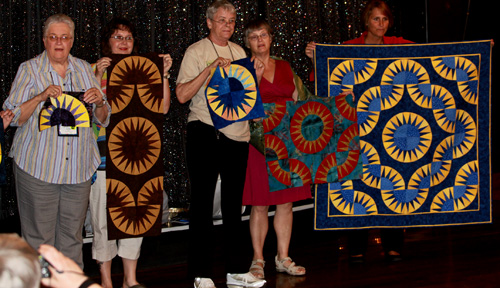Our last stop of the cruise was in Puerto Limon, Costa Rica. Joe, Carolyn, Mary Lou and I hired a taxi for the day and went on an adventure. We had a Spanish speaking taxi driver and an English translator as part of the package. Costa Ricans are proud to tell you that they have no army and primary school is compulsory for all children and free of cost so their illiteracy rate is only 10%.
As we headed toward the mountains our driver spotted a group of about 10 Howler Monkeys in a tree. I have never seen Howler Monkeys before. It was fascinating to look up at them and see how unafraid they were and how calm and peaceful they were. They really are a beautiful animal.
As we were driving along the road we saw a young man with a sloth. Now, we heard there were sloths in Costa Rica but the odds of seeing one were slim to none because they are shy and stay well hidden. Our English speaking guide told us it is illegal to have them as pets and you can actually go to jail for having one as a pet. So when we saw this young man along the road we pulled over and talked to him. He allowed us to pet the sloth. The sloth’s coat looked as if it would be a very stiff type of hair but it was as soft as my dog’s fur.
Now I’m not saying this young man has this sloth as a pet but they certainly have been hanging out together. Look how the sloth looks into his eyes. Now that’s real love on both of their parts. Seeing the sloth and getting to touch it was truly a highlight of the day.
Our next stop was a horse farm with wonderful gardens. The flowers were so bright and big you could not miss them. I love the foliage in this part of the world. It might be because I don’t see these types of flowers where I live.
Another thing we saw in the gardens were these very large bird nests. They reminded me of a Baltimore Orioles nest but on steroids. I’d never seen anything like it. There were probably 20 of these nests in a small area.
The birds that reside in these amazing nests are called Montezuma oropendulas. According to our guide the female will move from nest to nest until she finds the one she likes the best and then she moves in with her new boyfriend! So the one with the best house wins. Their bright yellow tails were impressive as well as the marks on their faces.
Then we were off to the Del Monte banana plantation. I had no idea what the banana I eat every single day for breakfast went through before it got to me. Here we are at the edge of the plantation with our guide.
Our guide showed us one of the flowers from the banana tree. As she lifted some petals we could see the little yellow long sections. There are many of these in the flower and each group becomes a bunch of bananas.
Employees walk through the trees/plantation and when the bananas are ripe enough they cut these very large clusters of bananas, which weigh maybe 100 pounds, and then clip them onto a line that gets pulled into the washing, sorting and packing area. As we were standing there watching this operation a young man, maybe in his 30’s, was pulling a line of probably 25 very large clusters of bananas into the work area. He walked slowly and was leaning forward to get the momentum he needed to pull this very, very heavy line of bananas. Another group of friends went to a different plantation and told us a mule pulled the bananas. Interesting. All the bananas were covered with a thin blue plastic. We were told the blue plastic covers were placed on the bananas to protect them from birds, monkeys and pesticides as they are maturing.
In the trees there were hundreds of large spiders. And I am not exaggerating. So guess what? This is not a job for me. No thank you. I’d rather teach quilt classes. I hate spiders. Especially large spiders!
These large clusters of bananas are then cut into smaller bunches and tossed into clean water to remove any pesticides that may have gotten through the plastic and personally I think to get rid of any spiders. Workers then cut them into bunches like we see in the grocery store. Each worker handles the bunches to check for any damaged bananas. If there are any marks of any kind on the exterior skin they are quickly sliced from the bunch. The knives they use are extremely sharp and you can tell the workers have done this many times before. They move quickly and efficiently. The damaged bananas are gently tossed onto a conveyor. We were told there are 3 levels of bananas as far are the workers are concerned. The most damaged or marked are kept in one area to be used for baby food. Since the fruit inside is good and only the exterior looks bad the fruit can still be put to good use. The second level, slight markers or starting to ripen, are kept in their country. The best bananas are shipped to the United States and the United Kingdom in one of those large containers on one of those large ships I showed in my previous email. I now appreciate my breakfast banana a whole lot more.
Our next day on the ship was another “at sea” day as the ship is now heading back to Fort Lauderdale. I taught a machine applique workshop for my final class. Here is Cindy hard at work.
And later that day we had a show and tell for the students to bring their projects they worked on during the classes or projects they made on previous cruises. Here are some of my students from the “Ocean Sunrise” workshop. Kim was holding my finished quilt so those attending could see what the students might make with their blocks.
I think every person in our group would agree the cruise was fabulous. And most of us would say that our trousers are tighter due to the good food served on board! Check out www.quiltcruises.com to see the cruises coming up in the next year or two. My next cruise with this group will be in April of 2013 to Japan and China. I have never been in that part of the work and am anxious for another adventure. Come join us.
